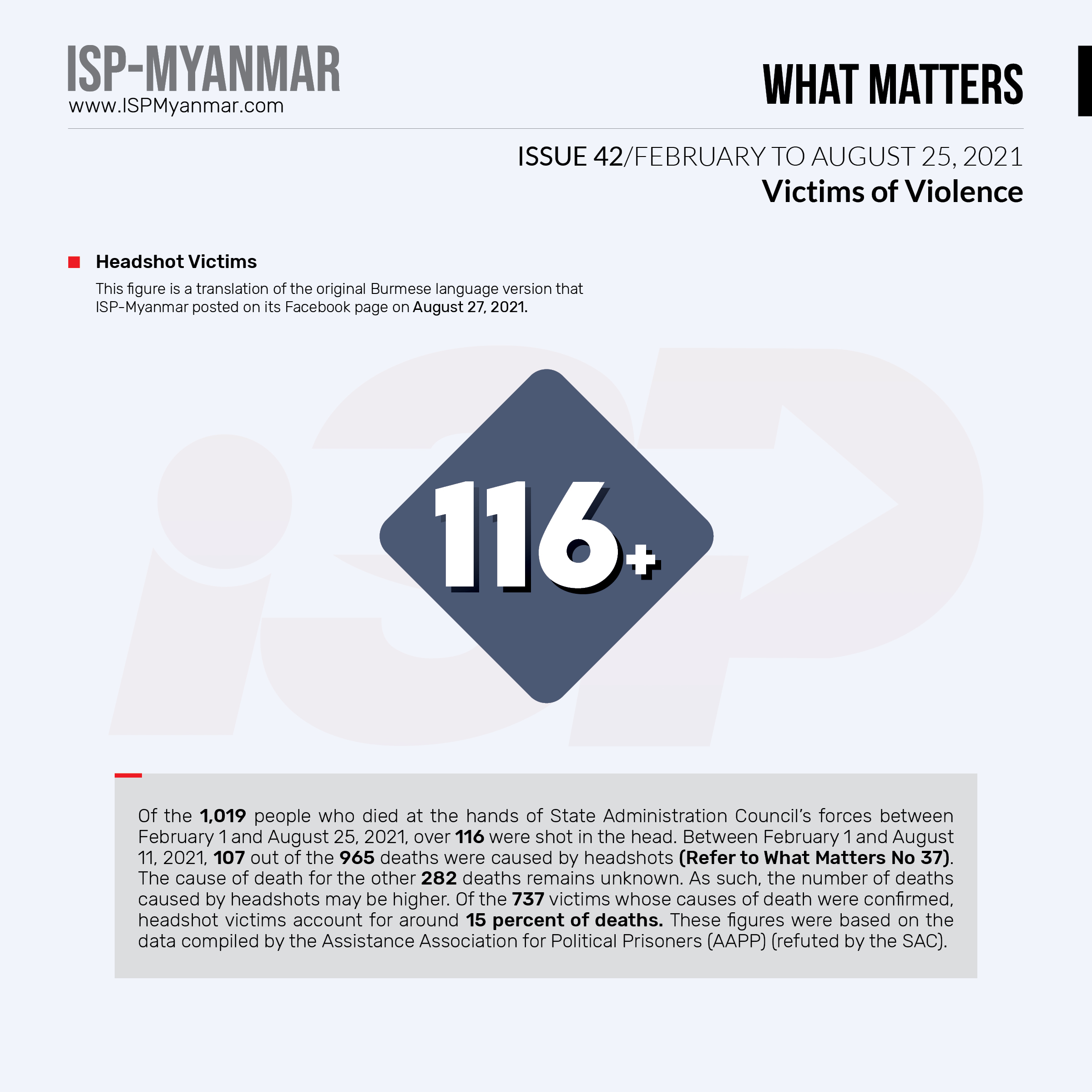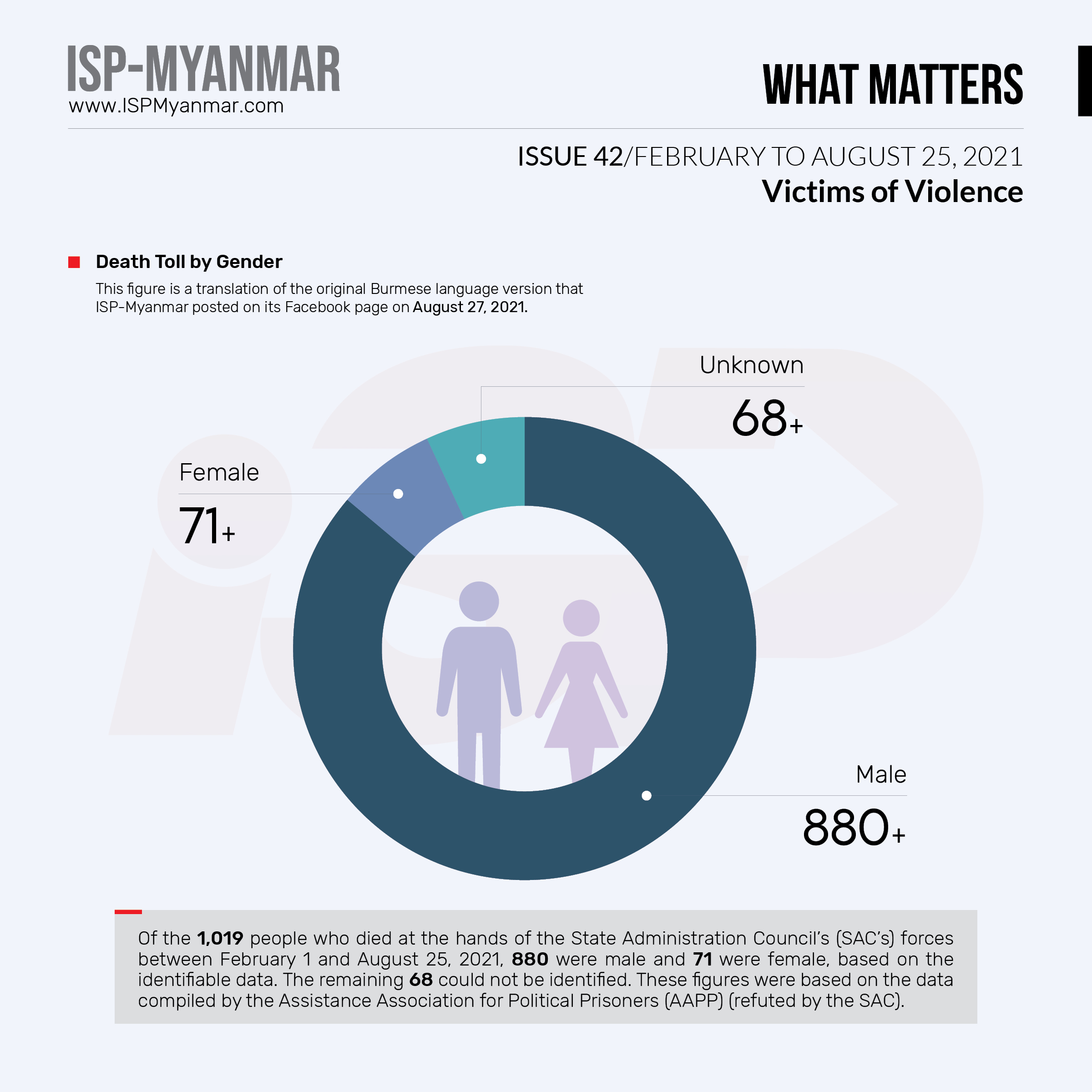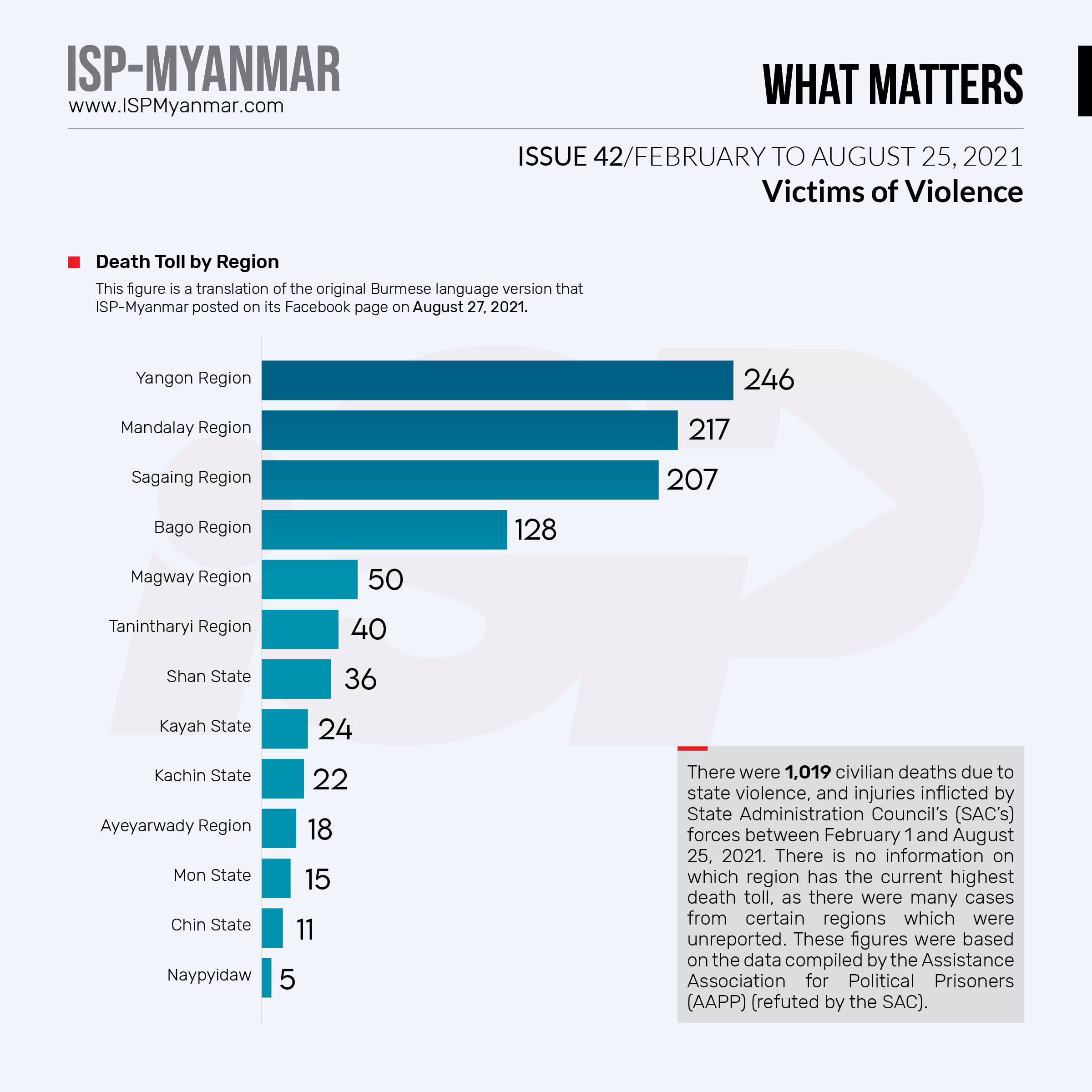What Matters No. 42
(This article is a translation of the original Burmese language version that ISP-Myanmar posted on its Facebook page on August 27, 2021.)






∎ At Least 1,019 Killed
The military’s staging of a coup d’état on February 1, 2021 triggered a series of mass protests throughout Myanmar. As of August 25, 2021, a total of at least 1,019 civilians have lost their lives as a direct result of violent crackdowns, and injuries inflicted during arrests, by State Administration Council’s (SAC’s) forces. Many more were injured, and SAC’s forces committed serious human rights violations. The Assistance Association for Political Prisoners (AAPP) collected data on the causes of the deaths of 951 people which were reported by August 25, 2021, with many more cases likely to be added to this list at a later date.
∎ 31 Fatalities Added to Death Toll
Compared to data published in What Matters No.37 (issued on August 12), the death toll has now risen by more than 31 deaths in the last 15 days. Of these, ten were reported in the Sagaing Region.
∎ Highest Fatalities Among Young and Middle-Aged People
Among the victims of military-state violence, people between the ages of 18-30 and 31-40 had the highest totals, followed by those aged between 41-50. Yangon Region saw the highest number of fatalities; the Mandalay Region had the second-highest total.
∎ Over 116 Headshot Victims
There a current total of headshot victims has reached over 116, about 15 percent of the 737 people whose cause of death was documented. It should be noted that the SAC accused the AAPP of inflating the numbers on this list and reporting inaccurate figures. According to those figures published by the SAC, there were 251 protesters who died between February 1 and April 15, 2021. It was also reported that 24 members of the state security forces, and 17 people accused of being informants for SAC, were also killed. During the press conference on July 12, a spokesperson for the SAC stated that about 173 people had been killed in terrorist attacks. These figures were reported by the SAC and have not been verified by independent organizations.
In addition, there have been 69 violent crackdowns against civilians by the SAC’s forces. 199 people died in skirmishes and ongoing conflicts in July alone, according to a statement by the National Unity Government’s Ministry of Defence on their Facebook page on August 9, 2021. These figures have also not been verified by independent organizations.
∎ Why does it matter?
Studying the number of violent crackdowns, the number of victims who died during those crackdowns, the number of people killed as a result of targeted operations, as well as studying exactly how people were killed, can provide insight into the extent to which regime forces have complied with internationally-agreed upon rules and regulations for dealing with mass protests. This data can also be used to determine whether human rights violations were committed from the perspective of transitional justice.
∎ Other relevant readings
AAPP has collected detailed data on anti-coup protesters who were targeted and killed during the violent crackdowns in the aftermath of the February 1 military coup. The AAPP database includes the number and cause of death of the protesters; from these data we can begin to understand the way that regime forces have responded to the anti-coup movements and find evidence of human rights and dignity violations by the regime forces. Daily updates from the AAPP are also available on the organization’s website and social media pages, such as Facebook and Twitter. Any available information not yet contained in their updates can also be shared with the AAPP at [email protected] .
